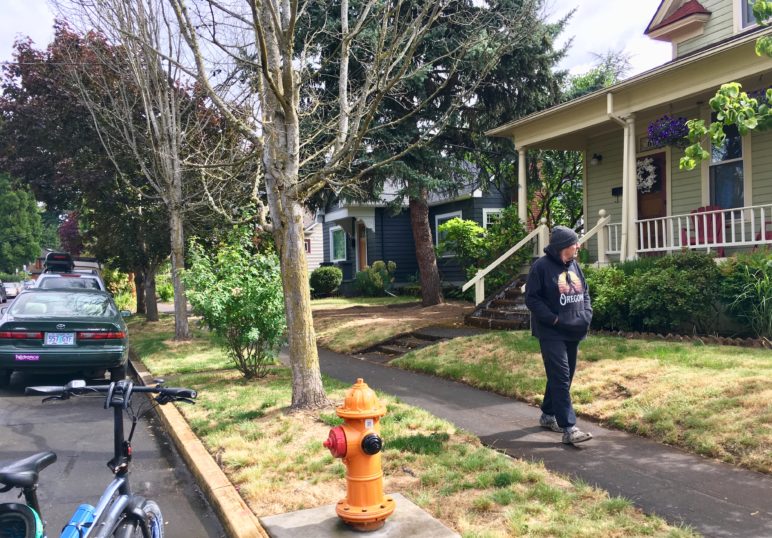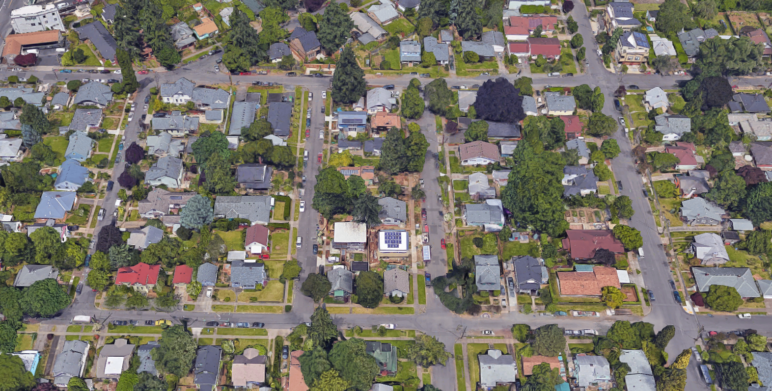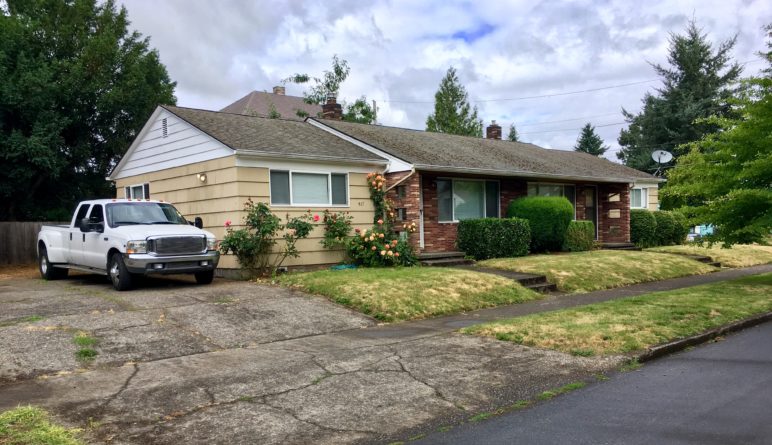When people who live in low-density areas think about re-legalizing duplexes, triplexes and fourplexes, they wonder, understandably, about what exactly might happen to their neighborhood.
Will the beautiful Victorian down the block be destroyed? Will all the nice trees be chopped down?
As I write this, Oregon is in the final days of debate over what would be a historic statewide legalization of “middle housing”—duplexes, triplexes, fourplexes, townhomes and cottage clusters—in urban areas. The state House of Representatives passed it yesterday, 43-16. It’s now on the floor of the Senate.
So a lot of Oregonians are wishing for a crystal ball right now. If the state passes this bill and cities and counties spend the next few years shaping its mandate into nuanced local code, what will Oregon cities look like in another 10, 20, 30 years?
People wondering about this: I bring you good news. I know quite a lot about what they’ll look like.
Duplexes, triplexes and fourplexes have been legal in my own low-density neighborhood for the last 39 years.
I would bet you quite a bit of money that most of my neighbors don’t even know. That’s because our neighborhood looks like this:

And this:
And this:

The area where my family lives (in a rented backyard cottage) is a little wedge of homes slipped between Northeast Glisan Street and Interstate 84. One of the last few neighborhoods to fill in before Portland’s 1959 ban on middle housing, it was built as a middle-class area, so 10 of the homes in the image above are actually in older duplexes. But most of them aren’t; more than half are detached homes of 1,000 to 2,000 square feet. (There’s also one fourplex, and one accessory unit other than ours.)
Presumably due in part to those existing duplexes, and to the fact that the richer folks one mile closer to downtown would have been more likely to lawyer up against any changes to their area, our neighborhood was one of the places affected by Oregon’s statewide upzone of 1978 to 1982. State regulators had ordered Portland to find room for new housing; the city decided to allow some of it here, among other areas. Portland’s 1980 Comprehensive Plan allowed one home per 1,000 to 2,500 square feet of land here, compared to 5,000 square feet previously.
There was a catch: Instead of actually zoning for this potential middle housing, the 1980 document declared Portland’s intent to zone most of our area for that slightly higher density eventually. But for a fee in the thousands—today it’s up to $15,986—a property owner could claim that higher density immediately.
In other words, if you wanted to build a fourplex, a duplex, or detached homes on narrow lots, you pretty much could.
Over the years, a few people did. This duplex went up in 2004:
 This triplex in 2008 (it’s by far the largest new building, and actually about 50 percent larger than anything Portland’s local zoning reform would allow on low-density lots of this size):
This triplex in 2008 (it’s by far the largest new building, and actually about 50 percent larger than anything Portland’s local zoning reform would allow on low-density lots of this size):
But most homes, as you can tell, have stayed pretty much as they were. A few have been remodeled and resold. Others have probably crumbled a little.
Today, when I walk through my neighborhood to the rail stop, I weave through a pleasant hodgepodge of architectural history, from the 1956 ranch duplex across the street:
 To this 1916 house that always flies a Cascadia flag:
To this 1916 house that always flies a Cascadia flag:
To the 1948 bungalow with four porch-dwelling cats who my wife refers to as The Council:
Somewhat denser housing has been legal on all of these lots for a generation. But because the buildings are in fine shape, it doesn’t make financial sense to tear any of them down for buildings that would be only a bit larger. So these stay in service alongside the newer stuff, providing different housing options for different sorts of neighbors.
Our pocket neighborhood has about 200 low-density residential buildings. All told, 39 years after Portland’s 1980 upzone, 20 homes have been built using the increased density.
For those keeping score, this means that every four years, our little pocket where fourplexes are legal has changed by an average of 1 percent.
It’s not much additional housing, honestly. This is why cities need to allow new apartment buildings, too. But the fact that our neighborhood allows options other than big luxury oneplexes means that the new duplexes and skinny homes that have come in go for about the same prices as the older big-lot homes next door. And even this trickle of new housing means we’re doing more than most other low-density areas to help Portland keep up with its job and population growth.

Is our area unusual? No. Here is a fact you may not know about Portland: Duplexes have been legal on every corner lot in the city since 1991. But 28 years later, how many of those corner lots actually have duplexes? Just 3.5 percent, according to city records.
I’m not claiming our area is perfectly representative. That $15,000 fee probably slowed redevelopment a bit, though it’s gone now—last year, the city officially upzoned the area. (“Eventually” finally came, though there have been zero new projects so far.) Cities can and should customize local rules about building size for their local situations to find the right balance between growth and disruption, especially in neighborhoods with more vulnerable people than mine. Oregon’s state-level bill gives cities plenty of ways to do this.
But even in the most desirable neighborhoods, where (other things being equal) middle housing will tend to be built first, legalizing fourplexes isn’t going to lead to wholesale change—even if, in some cases, it’d be better for everyone if it did.
Re-legalizing duplexes, triplexes and fourplexes isn’t going to utterly transform a city. It’ll just allow a gradual shift into something slightly livelier, slightly more sustainable, and quite a bit more welcoming than it would otherwise become.
If these measures pass in Oregon and Portland, along with the similar reforms in Seattle and Vancouver, people around the world won’t have to pine for a crystal ball that could see the future of low-density zoning reform.
They’ll just have to spend a little time looking at photos from the thriving, gracefully evolving cities of the Pacific Northwest.









Comments are closed.